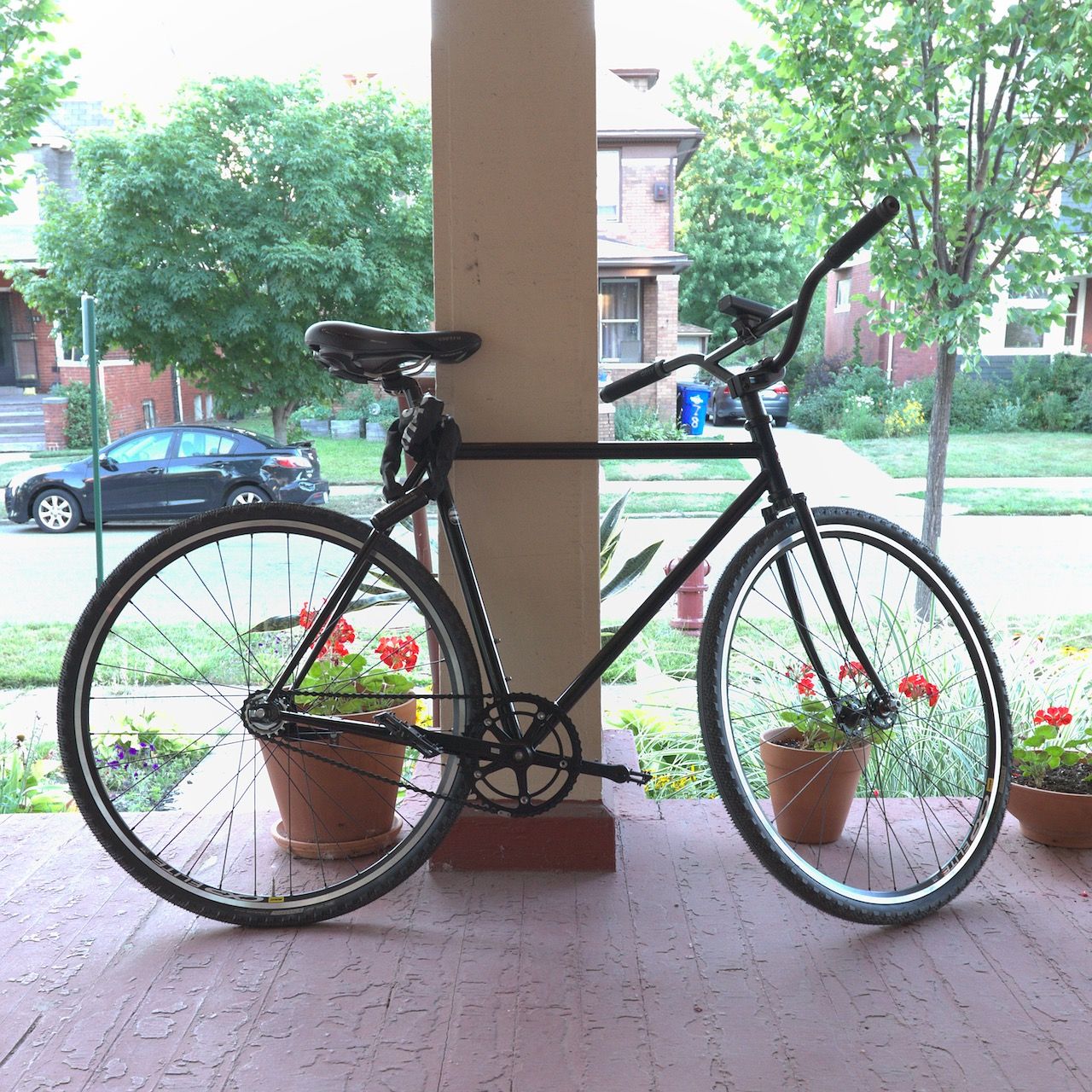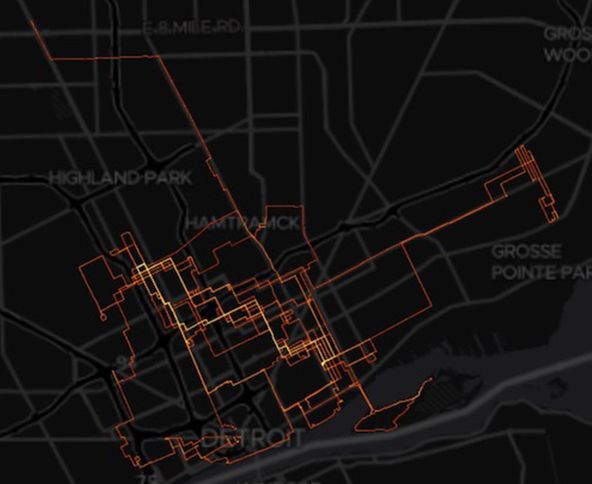Motorless in the Motor City
A week without a car. How I made it work.

Detroit is the city that put the world on wheels. Without a doubt, life in the motor city revolves around the automobile. With my car in the shop for repairs, I spent a week motorless in the Motor City. I took 50 trips totalling 228 miles (367.6 km) the week of July 25 to July 31, 2022.

It is possible to get by without a car in the Motor City. Some choose to live car-free. But in Detroit, income and wealth inequality have made car ownership unaffordable for many citizens. As reported by Car and Driver magazine, the average price for a used car is $27,500. Add to that the cost of gas, maintenance and some of the highest insurance premiums in the country, and it becomes clear why auto ownership is out of reach for so many Detroiters. According to the U.S. Census, 22.6 percent of Detroit households do not have access to a vehicle, three times greater than the [Michigan average][1].
I'm a regular bike commuter and take my bike for short trips around town, but I've never spent a week getting around solely by bike. So this weeklong experience took me down roads I've never traveled, and many that I've traversed only by car.
My commute to work is about six miles each way, is relatively flat, and for the most part I avoid busy roads. There's one section of what I'd call "good for the United States" protected bike infrastructure on Cass Avenue consisting of a painted green bike lane separated from traffic by flexible plastic pylons. The rest of the commute runs mostly through quiet residential side streets, interspersed with some light industrial areas where I have to watch for large trucks.
This all started when I threw my bike in the hatchback and drove up to the dealership for a service appointment to get a few issues looked at. One thing led to another and what I thought would be a few hours or at most a day or two turned into a full week with my car at the dealership. Getting from the dealership on a Monday morning to my office in Islandview was a 12-mile trek down roads I mostly hadn't biked before.
A pre-existing evening commitment to the far east side would require 25 miles round-trip in the saddle. That's a trivial car ride, but a lengthy bike ride through unfamiliar bike routes. This journey took me down Kercheval Avenue with a good two-lane bike track protected by pylons, which I've traveled before, then up to E. Warren Avenue all the way to Cadieux. With a little time to kill, I snaked my way through East English Village before arriving at my destination. I took Warren Avenue all the way home, since I had already taken it, and since it was dark out, it was well-lit. E. Warren Avenue also had separated bike lanes for a portion of my return trip.
In total, I found that I was able to do the things I wanted to do without relying on a bike. I took a DDOT bus on one occasion when I needed to get to the bike shop to pick up my second bike that was getting a tune-up.
Infrastructure
By North American city standards, Detroit is a bike-friendly city. It's more or less completely flat. It's streets, especially it's neighborhood side streets, are relatively low-traffic. City government has installed bike infrastructure as part of a wider streetscape program to make it easier and safer for residents and visitors to get around on two wheels. And the region's bikeshare system, MoGo, has been widely embraced.
In spite of these investments, there is much room for improvement. I was fortunate to visit the Netherlands a few times, biking hundreds of miles to get around Dutch cities and through the countryside. The best way to get around the Netherlands is by bike, hands down. The closest Detroit comes to Dutch-style bike infrastructure is a 1.5-mile stretch of Livernois from Curtis to Eight Mile where bike lanes are grade-separated from auto traffic.
Some of the bike infrastructure that was cutting edge by U.S. standards when it was installed six or seven years ago, like the protected bike lanes on Cass Avenue, are not aging well. For one thing, bike infrastructure in Detroit doesn't get nearly the same level of maintenance as the roads do. The design of these original "protected" lanes, separated from car traffic by flimsy platstic sticks, could be greatly improved with stronger protective measurees to ensure safety for cyclists and pedestrians and to keep traffic moving at safe speeds in pedestrian-heavy zones like midtown and downtown.
Also, there is an overall lack of bike parking facilities citywide. Some areas, have bike racks installed on the sidewalk. The Avenue of Fashion has functional but stylish new circular racks installed on the sidewalks. In other areas, such as downtown and midtown, you'll find rusted-out and deteriorating bike racks. Again, these things aren't maintained properly or at all.
Safety Concerns
Major freeways criss-cross the city and are heavily concentrated near downtown. In fact, downtown is surrounded on all sides by freeways and the Detroit River, effectively creating a moat around the core city. Whether by accident or by design, this creates choke points that make biking more difficult and dangerous by pushing bike traffic onto those busier roads that have motor vehicle overpassees, or onto crumbling and under-maintained pedestrian bridges.
Making biking safe should be a priority in Detroit, where almost a quarter of residents can't afford a car, where public transit it underfunded and largely ineffective and where these issues create hurdles to employment and opportunity. In doing so, it would reduce pollution and help meet climate goals and create a more livable, safer and equitable city.
Caveats/YMMV
Caveat one: this car-free experiment took place over a single week in July. No snow. No ice. No freezing temps. Not even a major thunderstorm. The weather was perfect. Mostly sunny, 70s-80s with low humidity. Caveat two: my work schedule kept me in one place for the duration of the week.
[1]: U.S. Census Bureau (2020). Selected Housing Characteristics, 2020: ACS 5-Year Estimates Data Profiles. Retrieved from: https://data.census.gov/cedsci/table?tid=ACSDP5Y2020.DP04&g=0400000US26_1600000US2622000&hidePreview=true

